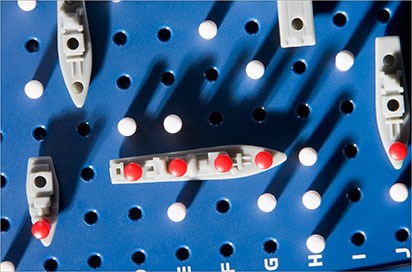The Six Dirty Words of Marketing
The Six Dirty Words of Marketing can destroy the best marketing plans especially when the target market is illusive. Here’s an approach that defuses their destructive power.
Finding a target in the open sea – battling the Six Dirty Words of Marketing
By John Favalo, CBC, Managing Partner
Eric Mower + Associates (EMA)
Group B2B
Twitter: @johnfavalo

BOOM! The explosion was deafening and messy. We’d just been hit by the Six Dirty Words and it wasn’t pretty. The Six Dirty Words? “We’ve always done it this way,” and they can blast apart a great marketing plan like a battleship gunning a balsa-wood building.
Remember playing the game Battleship? You and your enemy placed little ships on a game board that represented the ocean. You knew where your ships were but you couldn’t see your enemy’s. The object of the game was to hit all your enemy’s ships before he hit yours. So you just started “shooting.” You had no idea where to fire but you shot anyway. If you were lucky you’d get a hit, but you never really knew. You were shooting in the dark.
I was reminded of Battleship at a meeting, not too long ago. We gathered to discuss the launch of something very important and unusual. Not just another product this; in fact, it wasn’t a product at all. It was a system made up of several products. All together: a unique-in-the industry system that saved time, money and made installation safer and easier. The problem was: this system was the first of its kind, launched into a world of product selling.
We discussed launch objectives and when we asked about audience segments and targeting – BOOM – it was Battleship.

We knew from our research on systems like this that targeting early adopters in a narrower category would be way more efficient and effective. But how to target?
Of the whole audience, we discovered a segment that used something rather new called “pre-fabs” – a grouping of various and disparate products combined into smaller assemblies made off the worksite. In fact, many users in this segment did the pre-fabs themselves. Others in the segment tried “new-fangled,” time-saving products on a pilot basis. Would these be the ones to target? Seemed so, but how?
We came up with a successful, three-vector approach. We used advertising in the broad media but targeted the language in the headlines and copy to the early adopter. He would “self-select” while we built up awareness among “adopters” gradually. We used digital served within articles on “new approaches” and “productivity ideas,” reasoning that these would tend to attract the right group. Lastly, we created direct mail targeted to early adopters but partnered with distributors to use their mailing lists of known “pre-fab” businesses.
This go-to-market took a while longer to effect, but the strategy worked. The “system” was seeded among a smaller but more vocal cluster. The word spread and our PR team spread even more words through “proof-of-concept” case histories. The system gained traction and now is an example for the industry.
Don’t get blown away by The Six Dirty Words, defuse them. Next time you hear, “INCOMING” forget Battleship and consider an early adopter strategy. Opt to find the right target, not be one.
Need more information?
John Favalo, CBC
Managing Partner
Eric Mower + Associates
Group B2B
500 Plum Street
Syracuse, NY 13204
315-413-4240
Fax: 315-466-2000
mower.com


